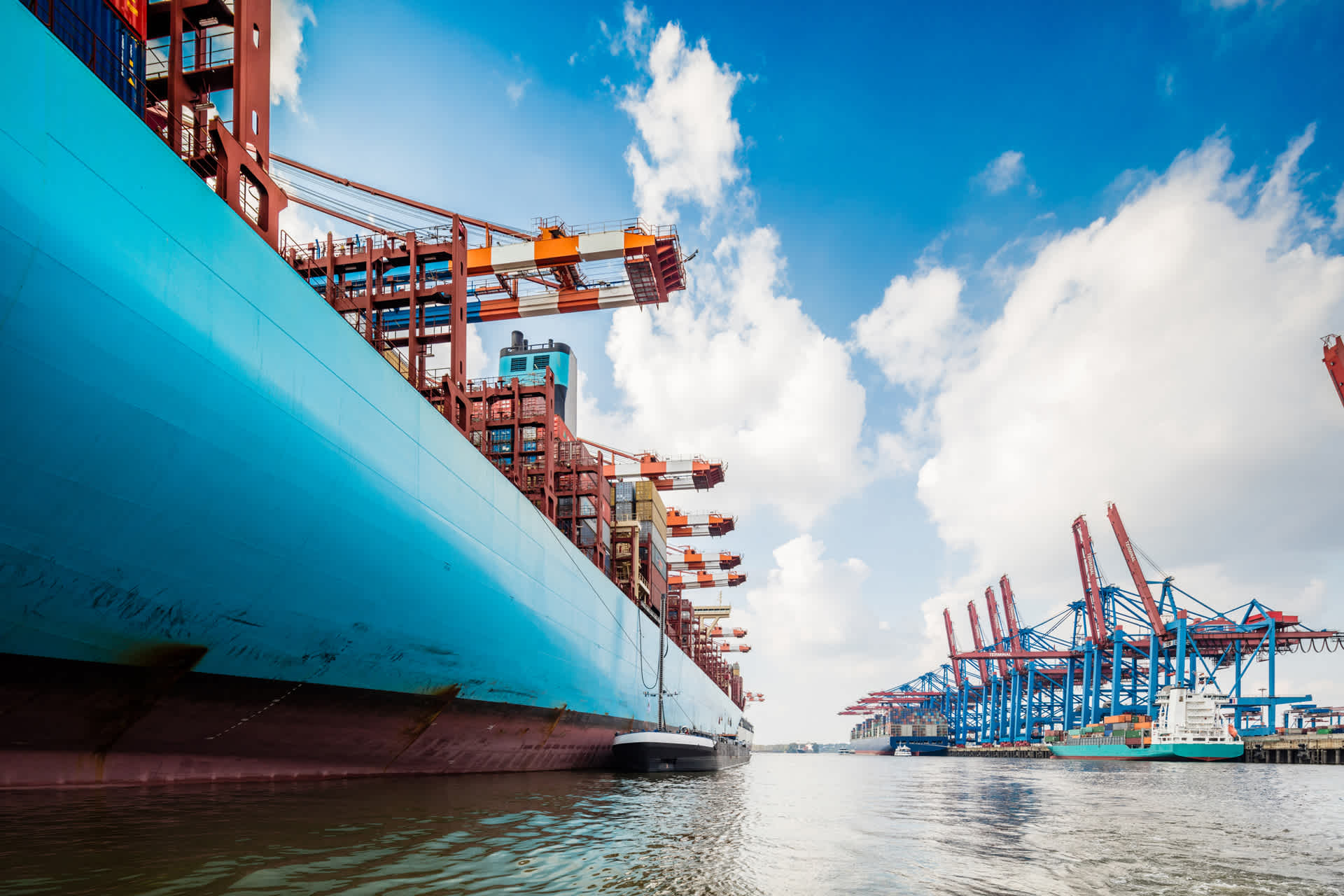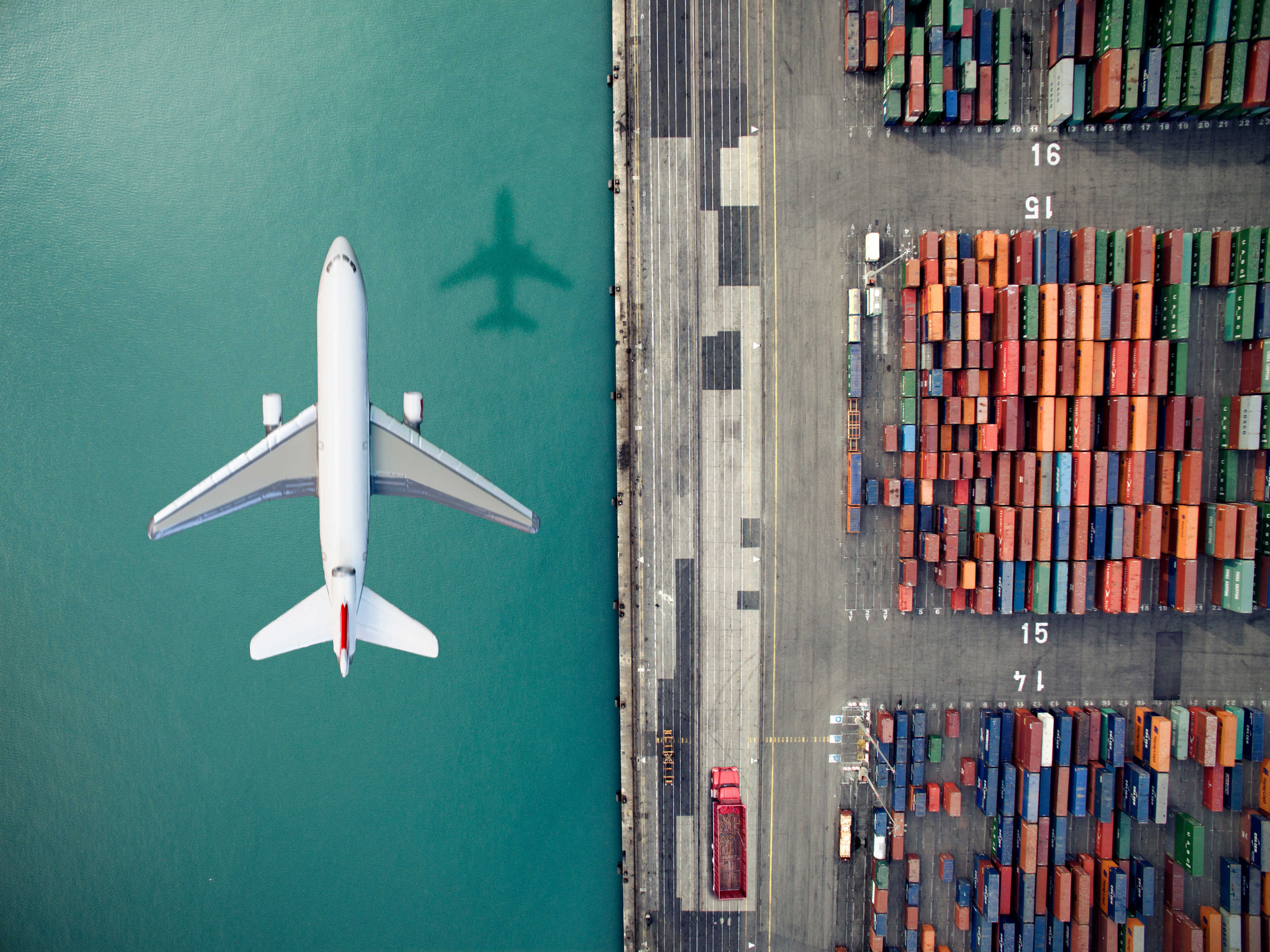Global Logistics Update
Freight Market Update: December 7, 2021
Ocean and air freight rates and trends; customs and trade industry news plus Covid-19 impacts for the week of November 16, 2021.
Freight Market Update: December 7, 2021
Logistics Rewired: Understanding Cargo Insurance
December 15 at 9:00 AM PST / 12:00 PM EST
Join the Flexport Insurance team as we discuss ways to protect your cargo investments, the impact of freight market conditions on cargo, and what to expect from the future of insurance.
Ocean Freight Market Update
Asia → North America (TPEB)
- Space pinch expected on TPEB through end of 2021, into early 2022 as carriers continue to announce additional blank sailings. Congestion-related delays, sliding schedules, early closure of feeder port operations, and Covid-related restrictions are all at play in reducing available capacity. Blank sailings to the PSW in particular are severe.
- Rates Rate levels remain elevated due to strong pre-Lunar New Year demand; premium market also remains strong.
- Space Critical
- Capacity/Equipment Critical/Severe Undercapacity
Asia → Europe (FEWB)
- Space and equipment crunches continue as market demand consistently exceeds supply with rates very high for a long period. The overall space situation is worsened by blank sailings and poor equipment availability. Carriers are overcommitted and are limiting booking acceptance or rolling shipments. With continuous vessel delays and shifts, schedule reliability is very low.
- Rates Rates remain stable at a high level. Most carriers extended their rates going into December. As we will be entering the traditional pre-CNY peak season soon, we anticipate that there will likely be rate increases in January.
- Space Extremely critical space situation
- Capacity/Equipment Severe equipment shortage across all Asia origins.
- Recommendation Book at least 4 to 5 weeks prior to CRD. Consider premium options, which may be limited. Be flexible in regard to equipment.
Europe → North America (TAWB)
- USWC remains heavily congested at both LA and LB despite improvement on the quay.
- Congestion at USEC ports is manageable at the moment with alternatives in place for vessels omitting Savannah.
- Rates December rates are set to remain strong for both USEC and USWC. PSS increases for USWC ports have been announced by a few lines.
- Space Critical especially to the USWC
- Capacity/Equipment Capacity remains tight for both North Europe and Mediterranean services. Better equipment availability at port; shortages remain at inland depots.
- Recommendation Book 5 or more weeks prior to CRD. Request premium service for higher reliability and no-roll guarantees.
Indian Subcontinent → North America
- Export demand remains strong for both USEC and USWC bound shipments. The ISC market is better suited for USEC bound cargo, as ocean carriers have deployed much more capacity on this trade vs ex-ISC to USWC.
- Rates for the first half of December remain unchanged from November levels as carriers push back their previously filed General Rate Increases (GRIs). Increases should be expected in January.
- Space to the USWC is and will remain a challenge into 2022. Carriers are using port of loading omissions to normalize sailing schedules for the Transpacific trade. Unfortunately, this often means the ISC region is omitted as a port of loading.
- Equipment is a challenge at smaller Indian ports in the South and South-East. Equipment normalizing at the main ports of Nhava Sheva and Mundra.
- Recommendation If routing to USWC, consider rerouting to USEC and transloading/trucking to final destination.
North America → Asia
- Vessel arrivals and available capacity remain fluid for USWC POLs. USEC capacity has been more readily available; Deteriorating schedule integrity, in addition to creating void sailings and delays, is creating significant challenges with posted earliest return dates and vessel cut-offs at the port.
- Rates For December, there are multiple GRIs likely to be implemented for India destinations requiring transshipment as well as GRIs for destination Australia. GRI activity for January anticipated for select Southeast Asia and Oceania destinations.
- Equipment Deficits on containers and chassis are still plaguing IPI origins. Availability for standard equipment at ports has not been an issue, but any special equipment is hard to come by.
- Recommendation Please place bookings 4 to 6 weeks in advance to secure your equipment and vessel space.
North America → Europe
- There is available capacity on the TAEB trade from the US East and Gulf Coasts. US West Coast service to Europe is extremely tight due to void sailings caused by systematic delays. Multiple TAEB service strings will be omitting Savannah and calling Charleston or Jacksonville instead, due to the significant congestion issues at the port of Savannah.
- Rates to remain steady for December. There have been multiple GRI’s announced for January from the US East Coast and US Gulf.
- Equipment Deficits are still plaguing IPI origins. Availability for standard equipment at ports has not been an issue, but any special equipment is hard to come by.
- Please place bookings 3 to 4 weeks in advance for East Coast/Gulf sailings and 6 weeks for Pacific Coast sailings.
Air Freight Market Update
Asia
- N. China: Demand and rates continue to climb this week. Due to the Omicron variant, the market has reacted quicker than anticipated. Limited capacity is available at higher rates for palletized cargo while loose cartons may benefit from slightly lower rates. Capacity constraints and high demand are expected to continue past the traditional peak season.
- S. China: The TPEB market situation ex-South China remains similar to the previous week. Capacity is tight and rates remain high as shippers rush to push out cargo before the year’s end. Some flights on the FEWB trade lane have been canceled due to uncertainty regarding the new Covid variant, so expect to see further capacity crunches and rate increases. In addition, over the weekend several Air France trade unions called for industrial action; discussions between parties are expected to take place on 12/8. These actions have mainly affected AF’s intra-European trucking services at the CDG hub and are leading to a freight backlog, however the airline is working to reschedule and resume shipments as soon as possible.
- Taiwan: The market continues to be very tight and space constrained, leading to prolonged origin dwell times. Departures under standard service are already pushed back to the last week of December at the earliest, especially for US East Coast volumes. Also, both TPEB and FEWB rates are expected to increase starting from 12/13. Regarding the FEWB tradelane, direct flights to LHR were expected to resume this month, however due to the EU’s Covid situation these flights will continue to fly at lower frequencies. In addition, over the weekend several Air France trade unions called for industrial action; discussions between parties are expected to take place on 12/8. These actions have mainly affected AF’s intra-European trucking services at the CDG hub and are leading to a freight backlog, however the airline is working to reschedule and resume shipments as soon as possible.
- SE Asia: Space ex-Vietnam remains critical. In addition to the already constrained capacity, Cathay Pacific cancelled several flights as preventative measures against the new variant which will only exacerbate the ongoing supply and demand imbalance. These market conditions are anticipated to continue until January.
Europe
- Week on week, demand remains high as Christmas draws closer. Ocean to air conversions are still in the market from Europe, as moving cargo via ocean before the holidays is not a feasible option for inventory replenishment before the holidays.
- The demand capacity imbalance still continues, as is evident amongst the squeezed rates, which increased further this week . We see some re-introduction of passenger routes on the Transatlantic, however any spare cargo capacity on these flights is immediately filled. Space is still tight. Be open to a longer transit time, and transit via a secondary hub where there is more passenger traffic. An example is Detroit, and Minneapolis.
- Splitting cargo into still smaller batches across more uplifts is a viable solution in a congested market with limited capacity.
- Congestion at AMS airport terminals has improved, and is being closely monitored. Stakeholders involved at AMS have been working closely to monitor, and have action/contingency plans should there be any further sudden import/export spikes. Terminal congestion across other Europe hubs still continues to be a bottleneck. It is expected to last until the end of the year, and negatively impact all freight forwarders’ transit times.
- Advice continues for all trade lanes ex-EU: Place bookings as early as possible for most optimal rates and routing solutions.
Americas
- US export demand will remain at high levels until the last weeks of December. Larger shipments from major outbound gateways can take 2 to 4 days from booking to uplift into the EU, LATAM, or Asia.
- US authorities lifted the ban on travelers from the EU, and European Airlines are slowly introducing more bellyhold capacity. Additional capacity has also been deployed into LATAM.
- TPWB and TAEB have not experienced cancellations due to the new COVID variant.
- LAX/ORD/JFK ground handlers continue to face backlogs and are using off-airport facilities to manage the flood of inbound cargo, which has a trickle-down effect on the export side. Many have shortened their free time for storage, and have implemented new, earlier close-outs for exports to accommodate longer throughput times and screening requirements.
- Rates to Latam, Europe and Asia have seen seasonal increases, and will remain at these levels until the last weeks of December. Fuel surcharge has slightly decreased.
- Slightly higher transit times into top European hubs due to the current influx of cargo arriving to their terminals.
- Recommendation Book early considering the current dwell time at airports.
Updates from Flexport's Customs & Compliance Team
World Customs Organization Unveils Final 2022 HTS Nomenclature
Last week, the World Customs Organization (WCO) announced that the final edition of the 2022 Harmonized System tariff nomenclature is available to view online. The WCO encourages the international trade community to begin the process of preparing for the updates to reflect in their national customs tariff or statistical schedules.
See more: Logistics Rewired: 2022 Harmonized Schedule Update
CBP Will Deny Liquidation Extension Requests Related to Section 301 Litigation
CBP has issued a CSMS update that they will deny liquidation extension requests that importers file "based solely on the pending CIT litigation challenging the lawfulness of the Section 301 duties on Chinese goods under List 3 and/or List 4A.” Importers can file protests to challenge the lawfulness of such duties, but CBP will place them in suspension status and will not immediately act on the protests.
Factory Output News
- Taiwan Driven by steady demand for chips and tech products, Taiwan exports are expected to continue to rise for the 17th month. Source
- Malaysia Prices of essential goods are increasing due to supply chain issues. Source
- Indonesia Food demand for Indonesia is anticipated to increase by 4 times by 2050, signalling import growth. Source
- Vietnam Vietnam's trade revenue is expected to hit a record high in 2021. Industries with high exports, such as phones, electronics, machinery and components, are likely to post export growth rates of 15-25 per cent this year. Source
Freight Market News
Incentives Offered to Relieve Port Congestion Supply Chain Dive, as well as The Loadstar, report government and supply chain stakeholders have turned to incentives for trucking companies in an effort to relieve congestion at West Coast ports. The Federal Maritime Commission amended the traffic mitigation fee schedule to encourage use of off-peak hours.
Read More: Jumping Ship: When to Change Ports to Skip Congestion
Build Back Better Makes Clean Energy Main Focus The $2 trillion spending package allocates billions of dollars to make clean energy transition possible within the transportation and supply chain industry. From the plan, FreightWaves has specifically called out the funding plans ($10 billion each) to support transportation electrification, build out manufacturing supply chain resilience, and expand workforce development through increased employment opportunities.
Lack of Trailers Begins to Outpace Lack of Drivers A recent investment conference spoke to the latest issues plaguing the trucking industry, as FreightWaves details. While the truck driver shortage is experiencing a slight reprieve, the procurement of trucking equipment has recently become more difficult with backlogs to receive orders reaching as much as 36 months.
Read More: How to Forge a Golden Age of Supply Chain
Freight Market Update is a complimentary service from Flexport, the modern freight forwarder. If you're not already a subscriber, we invite you to subscribe here.
Please note that the information in our publications is compiled from a variety of sources based on the information we have to date. This information is provided to our community for informational purposes only, and we do not accept any liability or responsibility for reliance on the information contained herein.


